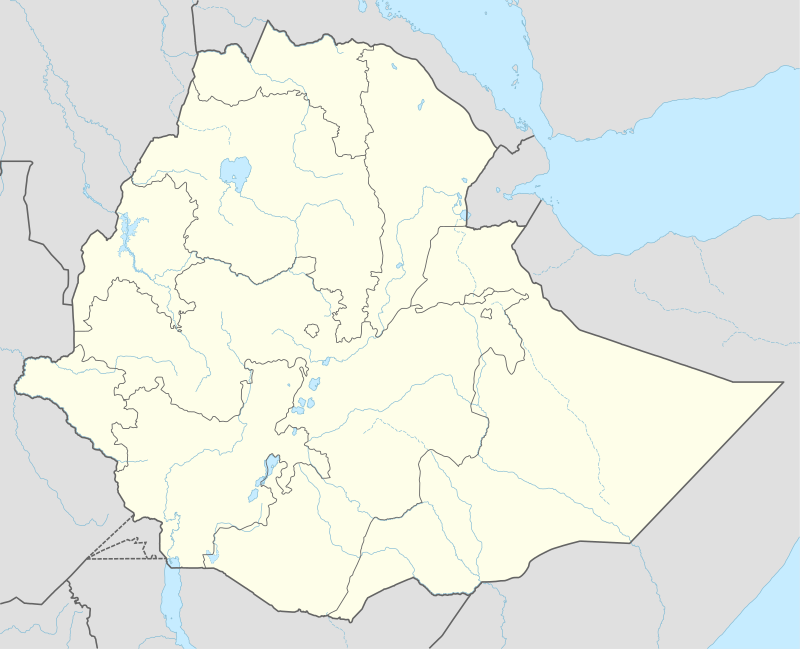Rama, Ethiopia
Rama (also called Mai Lala, Lala) is a town in Tigray, Ethiopia. Located 35 km north of the town of Adwa and 7 kilometers from the border with Eritrea, in the Mehakelegnaw (Central) Zone of the Tigray Region, this town occupies a fertile lowland area and has a latitude and longitude of 14°25′N 38°47′E with an elevation of 1385 meters above sea level. It is the administrative center of Mereb Lehe woreda.
Rama Adi Arbaete Mai Lama | |
|---|---|
 Flag | |
 Rama Location within Ethiopia | |
| Coordinates: 14°25′N 38°47′E | |
| Country | Ethiopia |
| Region | Tigray |
| Zone | Mehakelegnaw (Central) Zone |
| Woreda | Mereb_Lehe |
| Population (>30000) | |
| • Total | 7,824 |
| Time zone | UTC+3 (EAT) |
History
20th Century
A point of interest in Rama is the nearby church, Kor Nebir Mikael. Records at the Nordic Africa Institute website provide details of a primary school in Rama in 1968.[1]
On 29 September 1988, armed units of the Tigray People's Liberation Front overran Rama, killing 21 and capturing 854 government soldiers. This required the Derg to send a force to recover this important settlement on the road to Asmara, but it was not until late December that the 10th division of the Second Revolutionary Army fought its way into the town, only to be withdrawn a week before the decisive Battle of Shire.[2]
21st Century
In January, 2005, the United Nations Mission in Ethiopia and Eritrea reported that MECHEM had removed land mines from 12 kilometers of track leading to Rama. These mines had been laid during the recent Eritrean-Ethiopian War.[3]
Demographics
Based on figures from the Central Statistical Agency in 2005, this town had an estimated total population of 7,824 of whom 3,705 were males and 4,119 were females.[4] The 1994 census reported it had a total population of 4,504 of whom 1,973 were males and 2,531 were females. Rama is also the main fruit source in Tigray, the largest dam of irrigation was built in this town. since the demand for fruits like mango, orange, banana, and others has been increasing in Tigray esp in Mekelle the government of Tigray proposed the dam to be made and now it is starting it function. in Rama there are 2 elementary schools( RSSS and Memanu elementar) RSSS was built when haileselassie was on power, 1 high school and 1 preparatory.
References
- "Local History in Ethiopia" Archived 2011-05-28 at the Wayback Machine The Nordic Africa Institute website (accessed 28 January 2008)
- Gebru Tareke, The Ethiopian Revolution: War in the Horn of Africa (New Haven: Yale University, 2009), pp. 272, 275, 277 ISBN 978-0-300-14163-4
- "Media Briefing Transcript - 19 January 2006" United Nations Mission in Eritrea and Ethiopia website (accessed 21 January 2008)
- CSA 2005 National Statistics, Table B.4